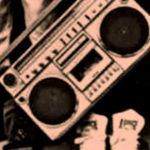NASA says 98% of astronauts’ urine, sweat can be recycled into drinking water
Written by ABC Audio ALL RIGHTS RESERVED on June 27, 2023
(HOUSTON) — The idea of recycling urine to make clean drinking water might make those with even the strongest stomachs a little queasy, but NASA has managed to do just that.
The federal agency announced astronauts aboard the International Space Station have been able to recover 98% of the water that crews take into space with them by recycling everything from urine to sweat.
As NASA prepares for longer missions — including to the moon and potentially beyond — engineers have been working on how to make sure astronauts have basic needs met without resupply missions, including how to recycle food, air and water.
This also helps ensure each crew member has an average of one gallon of water they need per day to drink, use in food preparation and for hygienic purposes, including brushing teeth.
“This is a very important step forward in the evolution of life support systems,” said Christopher Brown, a member of the team at Johnson Space Center that manages the space station’s life support system. “Let’s say you collect 100 pounds of water on the station. You lose two pounds of that and the other 98% just keeps going around and around. Keeping that running is a pretty awesome achievement.”
The recycling is done through the Environmental Control and Life Support System, otherwise known as ECLSS, which is a system of hardware that provides clean air and water to the ISS.
Part of the ECLSS is the Water Recovery System that produces drinking water. One component uses advanced dehumidifiers that captures moisture created by the breath and sweat of the crew, which is turned into drinking water.
The other component pre-treats urine and then uses technology to distill it into water that can be recycled. However, this distillation still leaves behind some urine brine, a byproduct that NASA says still has some water that can be reused.
This is where the Brine Processor Assembly comes into to play to extract any remaining water from the brine. Before this added component, only about 93% or 94% of water could be recycled instead of the current 98%, according to ECLSS water subsystems manager Jill Williamson.
The collected water is put through a filter to break down any remaining contaminations. Sensors pick up any impurities and water deemed unacceptable for drinking is reprocessed, according to NASA.
Iodine is also added to the water that the sensors deemed acceptable to prevent microbial growth. It is then stored until it comes time for the crew to use it.
“The crew is not drinking urine; they are drinking water that has been reclaimed, filtered and cleaned such that it is cleaner than what we drink here on Earth,” Williamson said. “We have a lot of processes in place and a lot of ground testing to provide confidence that we are producing clean, potable water.”
She added that recycling as many resources as possible will help as NASA prepares for lengthier and farther missions.
“The less water and oxygen we have to ship up, the more science that can be added to the launch vehicle,” she said. “Reliable, robust regenerative systems mean the crew doesn’t have to worry about it and can focus on the true intent of their mission,” Williamson said.
Copyright © 2023, ABC Audio. All rights reserved.







